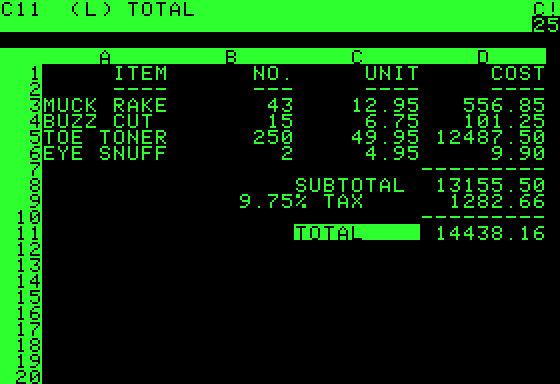 | ||
In marketing terminology, a killer application (commonly shortened to killer app) is any computer program that is so necessary or desirable that it proves the core value of some larger technology, such as computer hardware, a gaming console, software, a programming language, a software platform, or an operating system. In other words, consumers would buy the (usually expensive) hardware just to run that application. A killer app can substantially increase sales of the platform on which it runs.
Contents
Examples
One of the first recognized examples of a killer application is generally agreed to be the VisiCalc spreadsheet for the Apple II series. Because it was not available on other computers for 12 months, people spent $100 for the software first, then $2,000 to $10,000 on the Apple computer they needed to run it. BYTE wrote in 1980, "VisiCalc is the first program available on a microcomputer that has been responsible for sales of entire systems", while Creative Computing's VisiCalc review was subtitled "reason enough for owning a computer". Others also chose to develop software, such as EasyWriter, for the Apple II first because of its higher sales, helping Apple defeat rivals Commodore International and Tandy Corporation.
Lotus 1-2-3 similarly benefited sales of the IBM PC and compatibles, just as VisiCalc did for Apple sales. Noting that computer purchasers did not want PC compatibility as much as compatibility with certain PC software, InfoWorld suggested "let's tell it like it is. Let's not say 'PC compatible,' or even 'MS-DOS compatible.' Instead, let's say '1-2-3 compatible.'" Another killer app is WordStar, the most popular word processor during much of the 1980s. Once the Internet became more widely available to consumers, email was seen as a killer app that drove people to purchase computers, even though email is a genre of applications rather than a single "app."
The UNIX Operating System served as a killer application for the DEC PDP-11 minicomputer and VAX-11 minicomputer during roughly 1975–1985. Many of the PDP-11 and VAX-11 processors never ran DEC's operating systems (RSTS or VAX/VMS), but instead, they ran UNIX, which was first licensed in 1975. To get a virtual-memory UNIX (BSD 3.0) you had to purchase a VAX-11 computer. Many universities wanted a general-purpose timesharing system that would meet the needs of students and researchers (early versions of UNIX included free compilers for C, Fortran, and Pascal; at the time, offering even one free compiler was unprecedented). From its inception UNIX could drive high-quality typesetting equipment and later Postscript printers using the nroff/troff typesetting language, and this was also unprecedented for its time. UNIX was the first operating system offered in source-license form (a university license cost only $10,000, less than a PDP-11), allowing it to run on an unlimited number of machines, and allowing the machines to interface to any type of hardware because the UNIX I/O system was extensible.
Usage
The first recorded use of the term in print was 1987, in PC Week 8 Sept. 107/2. "Everybody has only one killer application. The secretary has a word processor. The manager has a spreadsheet."
The definition of "killer app" came up during Bill Gates's questioning in the United States v. Microsoft antitrust suit. Bill Gates had written an email in which he described Internet Explorer as a killer app. In the questioning, he said that the term meant "a popular application", and did not connote an application that would fuel sales of a larger product or one that would supplant its competition, as the Microsoft Computer Dictionary defined it.
Selected applications for computer systems
Video games
The term has also been applied to computer and video games that cause consumers to buy a particular video game console or gaming hardware over a competing one, by virtue of being exclusive to that platform. Such a game is also known in gaming parlance as a "system seller". Examples of a video game killer applications are:
